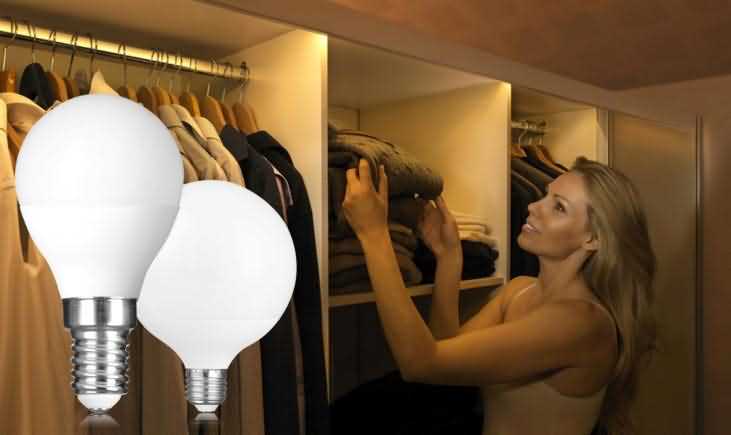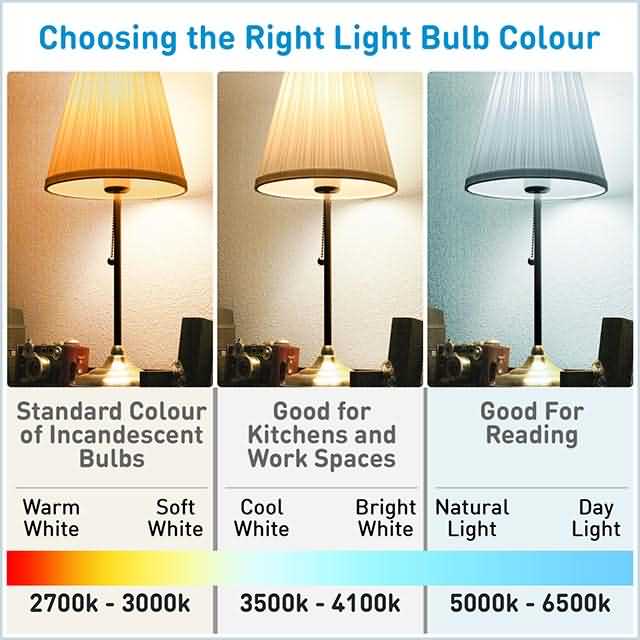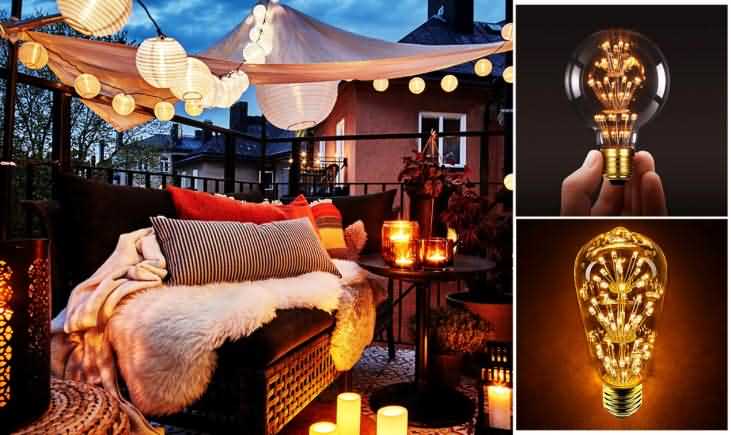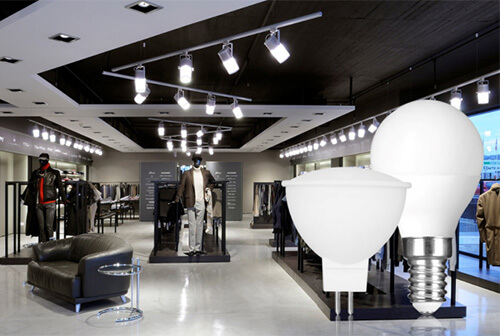LED Bulb For Home
In order to set the tone of a room and achieve the look you want, it's important to be aware of a light's specifications. Learning how to choose the light of a room with LED lights is rather than to learn its brightness and lumens. Do you want to create a relaxed atmosphere that's warm and bright, or romantic? Any what you want is possible with the right LED lights. They're different in a variety of intensities, color temperatures (shades) and with different beam angles, dimming capabilities, and color-rendering indexes (CRI).

Lumens
Lumens are a measurement of the amount of light source. The higher the lumen, the brighter the light. Lumens are often the deciding factor when it comes to purchasing new LED light bulbs or fixtures. They're a more reliable metric in practice rather than its wattage in choosing a light. An LED light that comparable to a 60-watt incandescent bulb might only consume 10 watts of power. Kitchens, bathrooms, laundry rooms, and closets are areas where high lumen lighting would be needed, but brightness, as any other lighting characters, is entirely up to you that what you really want for your room. LED bulbs are different in intensities which often depends the light's color temperature—otherwise known as the shade of white light. Our globe series bulbs and led corn lamps are belong to high lumen lights, they are particularly suitable in these areas.

Correlated Color Temperature (CCT)
CCT indicates the hue and tone of white light emitted from a specific bulb or fixture. It's measured in Kelvins (K), which is similar to degrees in Celsius. Different temperatures on the Kelvin scale represent different colors. For example, light at 2000K-3500K looks more orange/yellow and is called ultra warm or warm white, and as temperature increases in Kelvins, color changes to be more of a “paper white” known as natural or neutral white (between 3500K and 5100K) and finally into a bluish-white known as cool white (5100K+). As a light source's color temperature increases, brightness often increases. While shopping for LED lights, pay close attention to the color temperatures that is suitable for any bulb or fixture. Choosing a warm white bulb with a color temperature around 3000K might mean sacrificing some brightness. Whereas, if you choose the natural white version, it's likely that it will have a higher output.

Traditionally, different rooms are associated with different tones. For example, living rooms and nurseries tend to have soft warm white light. A warm white light source will highlight other warm colors in a room, is least likely to show imperfections, and appears less bright when compared to higher CCTs. In kitchens, basements, garages, and other areas where tasks are completed, it's standard to have natural or even cool white bulbs or fixtures because of the crisp, bright white light that they emit. All of our bulb products have a widely range of CCT, you can select suitable lights for your home easily.
Color-Rendering Index (CRI)
CRI indicates how accurately a light source reveals the true colors of objects, people, clothing, etc. when compared to how colors are shown in incandescent light or daylight. The closer a light’s CRI is to 100 (the CRI of incandescent light or daylight), the better the color rendition of objects under that light. Any room can benefit from high-CRI LED lights. They're suit for living room, lighting as they will show paint and furniture colors accurately. Kitchens, closets, bathrooms, dressing rooms, and other areas where presentation, appearance, and depth of color are important can also benefit from high-CRI LED lights. Accurate color rendering can be achieved with a high-cri light strip, can light, globe bulb, linear light, or other high-CRI bulb or fixture. Lights with a CRI of 80 or higher are considered to show colors most accurately. The CRI of an LED light generally ranges from 70 to 98.If you need to shop some high-CRI lights for your rooms, please click.
Beam Angle
Beam angle or pattern is a measurement of the angles that are formed between a cone of light’s brightest point (the center) and the points on both sides of the center where the light’s intensity is 50 percent as bright. A larger beam angle means a wider spread of light across an area and vice versa with small beam angles. While it depends on the angle and individual retailers, small beam patterns are often referred to as spot beams, and larger angles (usually anything above 90 degrees) are considered flood beams.
Fixtures or bulbs that emit wide beams, such as LED panel lights or BR LED bulbs for can lights are great for areas that require a lot of light, such as basements, kitchens, or living rooms. Narrow beam angles like those from can lights with LED PAR bulbs or track lights with MR LED bulbs are best for highlighting decor or small areas. Globe bulbs, such as A19 or G30 LED vanity bulbs, have 360-degree beam angles, which means that they throw light in all directions. Globe bulbs are the perfect choice for centralized light fixtures. If you want to review more centralized light fixtures please click here (link)

Dimmable LED bulbs
Dimmable LED bulbs and fixtures allow you to adjust the lighting in any room to match its function during a particular time. For example, in a living room or theater room, you might want low light for watching TV but high light output for a gathering of friends. They're also great for bathrooms where you need bright light to get ready but want dim lighting for relaxing in a bathtub. Dimmable chandelier bulbs, for example, can create the perfect atmosphere for a family dinner while also allowing enough light for the room to function as a work space for school projects. When dimmed, these LED lights also reduce energy consumption. They're available in a wide variety of shapes, sizes, styles, and colors from A19 LED bulbs to LED panel lights and retrofit LED can lights. If you need to review more dimmable bulbs, please visit our indoor series and scan bulbs pages.
Light emitting diode (LED) is an alternative lighting technology which promises the energy efficiency of fluorescent lights and also the brilliant spectral qualities of incandescent lighting. At the same time, LED lights are energy saving and environment friendly. In conclusion, LED light is the best selection for home.



